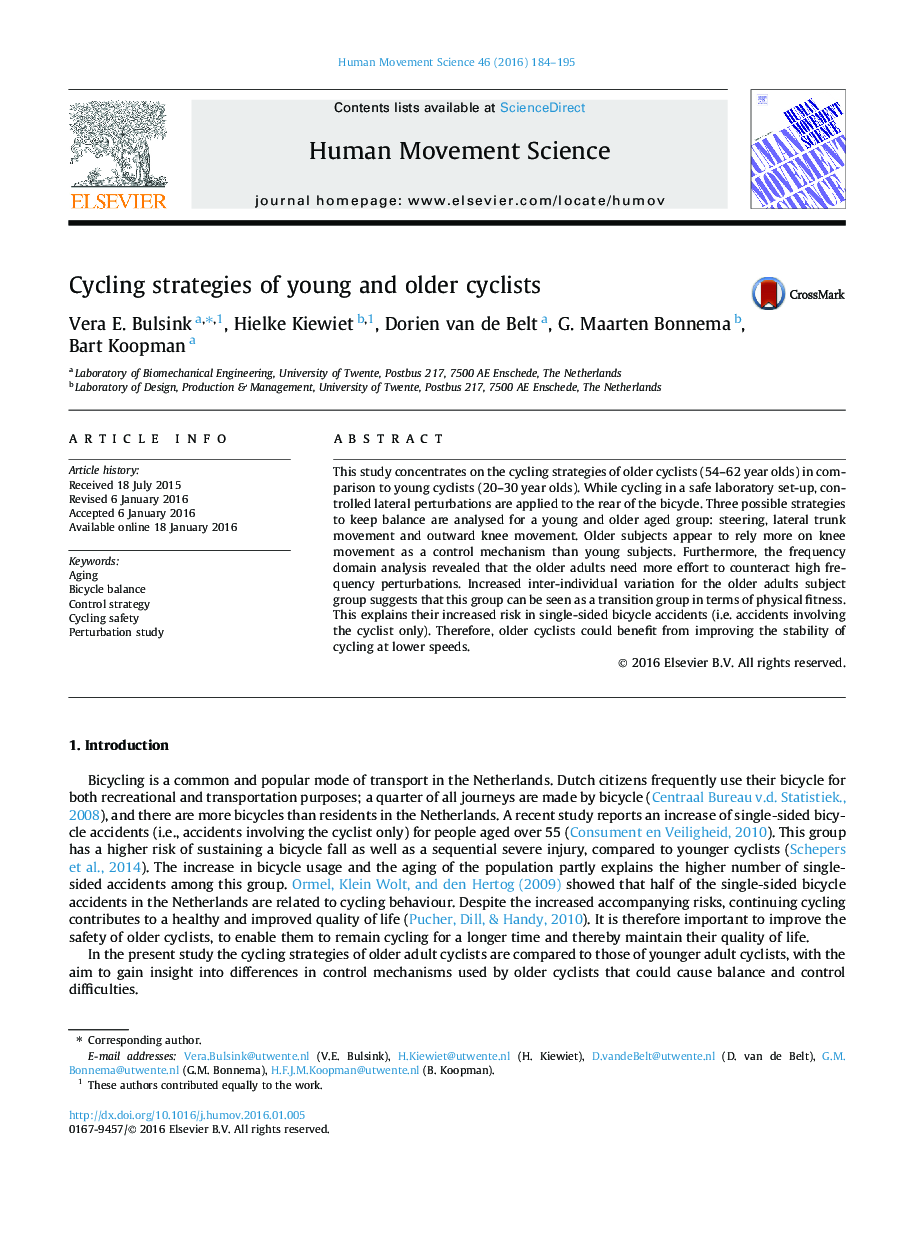| Article ID | Journal | Published Year | Pages | File Type |
|---|---|---|---|---|
| 928217 | Human Movement Science | 2016 | 12 Pages |
•15 young and 15 older cyclists performed perturbed and unperturbed cycling trials in a safe laboratory set-up.•We examined the cyclist’s reaction to the lateral perturbation in both the time and frequency domain.•Increasing age will lead to more use of lateral knee movement as a control strategy.•Older cyclists need more effort to restore from high-frequent perturbations.
This study concentrates on the cycling strategies of older cyclists (54–62 year olds) in comparison to young cyclists (20–30 year olds). While cycling in a safe laboratory set-up, controlled lateral perturbations are applied to the rear of the bicycle. Three possible strategies to keep balance are analysed for a young and older aged group: steering, lateral trunk movement and outward knee movement. Older subjects appear to rely more on knee movement as a control mechanism than young subjects. Furthermore, the frequency domain analysis revealed that the older adults need more effort to counteract high frequency perturbations. Increased inter-individual variation for the older adults subject group suggests that this group can be seen as a transition group in terms of physical fitness. This explains their increased risk in single-sided bicycle accidents (i.e. accidents involving the cyclist only). Therefore, older cyclists could benefit from improving the stability of cycling at lower speeds.
Graphical abstractFigure optionsDownload full-size imageDownload as PowerPoint slide
